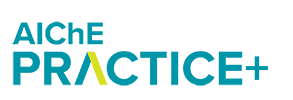
This course provides the undergraduate level chemical engineering student an appreciation that risks can change throughout a chemical process. It builds on learnings from ELA985 Practical Process Safety 1 in that the process safety management system, for it to be effective, covers the entire life cycle of the process. The design of the process is merely the beginning when it comes to safely managing process risks.
Unit 1
- Describe the importance of strong administrative controls and the connection between administrative controls and the engineered design
- Identify the hazards that need to be controlled for a specific design
- Explain how the equipment selected will introduce risk itself.
Unit 2
- Describe the origins of Recognized and Generally Accepted Good Engineering Practices
- Explain how following good engineering practices is a legal requirement
- Explain why regulations should be viewed as minimum requirements
- Explain why it’s important for engineers to know what the recognized good engineering practices are for the companies they work for
Unit 3
- Describe key risk reduction measures for different types of equipment that are commonly employed in process industries
- Explain how risk reduction strategies depend on written programs, policies and procedures
This course is targeted for junior level chemical engineering students before they would take senior design classes and for early career professionals in process safety roles that want more information on good engineering practices and risk is managed throughout the equipment life cycle and for various processes.
Unit 1: Reducing Risk for Specific Hazards
- Describe the importance of strong administrative controls and the connection between administrative controls and the engineered design
- Identify the hazards that need to be controlled for a specific design
- Explain how the equipment selected will introduce risk itself
Unit 2: Understanding and Using Good Engineering Practices
- Describe the origins of Recognized and Generally Accepted Good Engineering Practices
- Explain how following good engineering practices is a legal requirement
- Explain why regulations should be viewed as minimum requirements
- Explain why it's important for engineers to know what the recognized good engineering practices are for the companies they work for
Unit 3: The Role of Administrative Programs
- Describe key risk reduction measures for different types of equipment that are commonly employed in process industries
- Explain how risk reduction strategies depend on written programs, policies, and procedures
Find answers to questions about registration and refunds, tuition and fees, travel and lodging (for location-based courses), how eLearning courses work, how credits work, and more.


